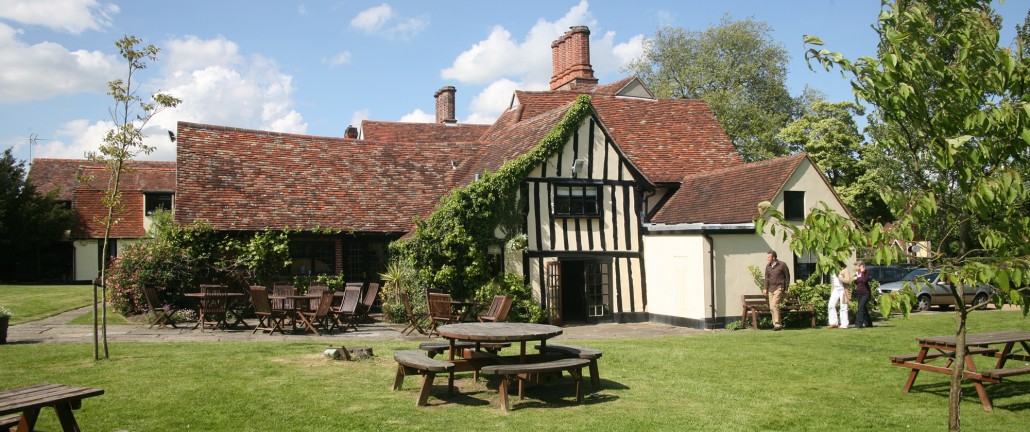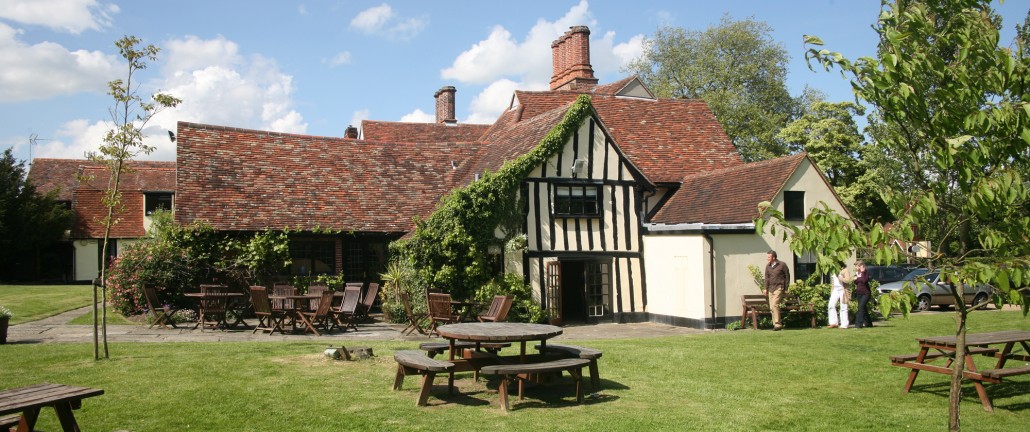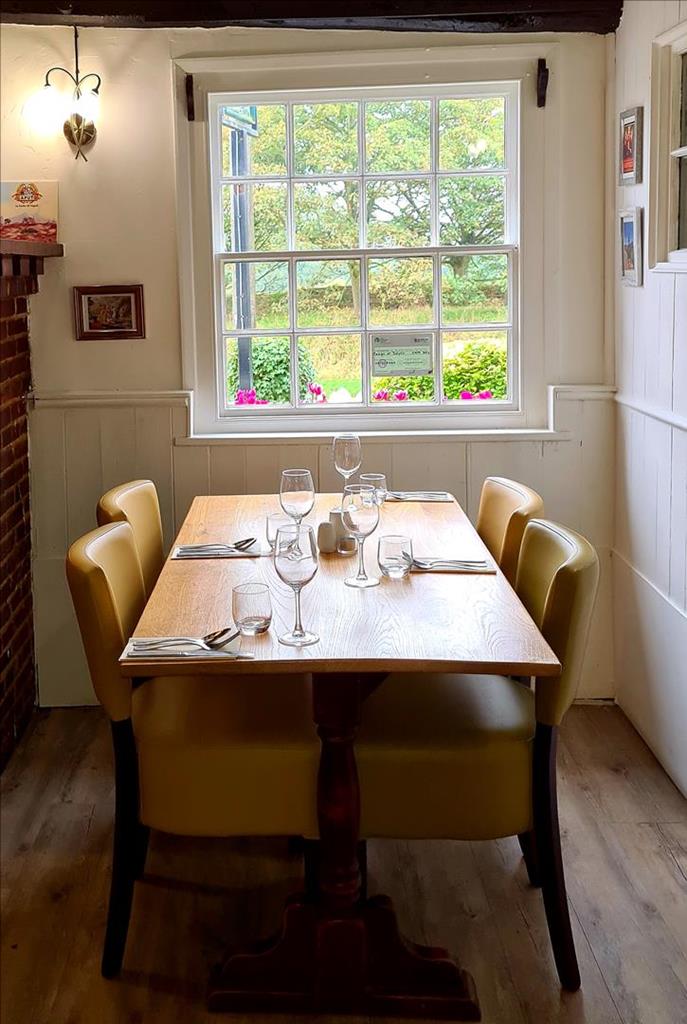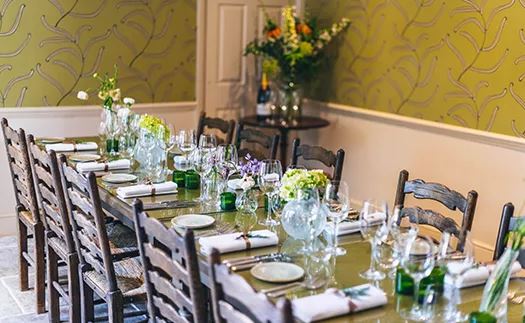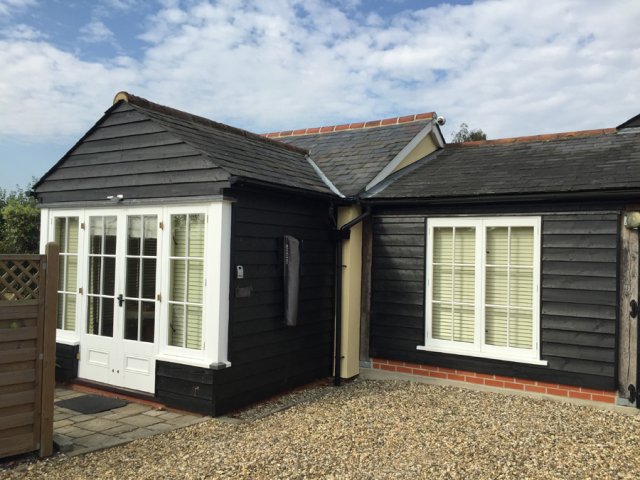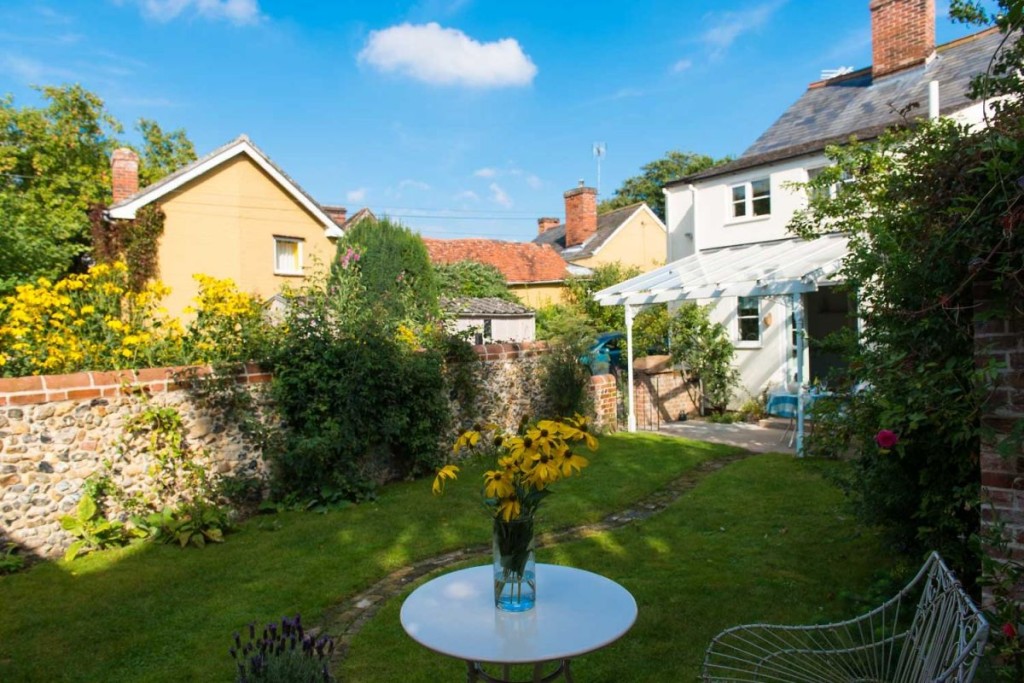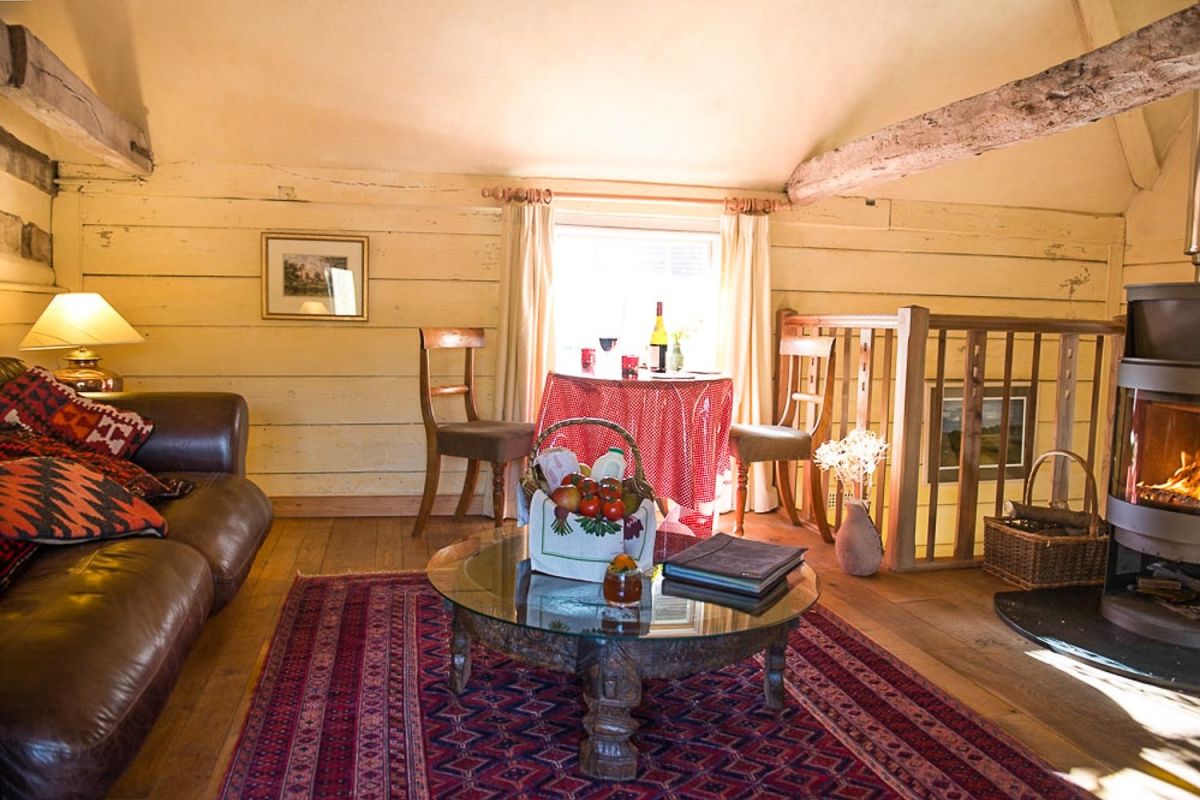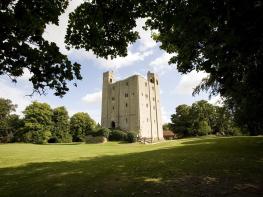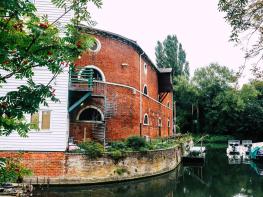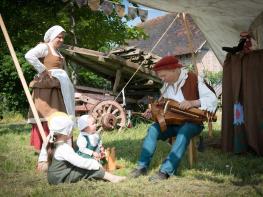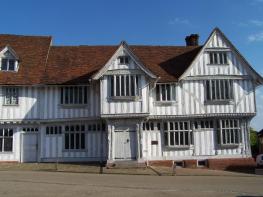The White Hart is a large timber-framed character building that includes the main restaurant and…
A rural circuit from Castle Hedingham

Explore the wealth of history packed into this tiny area.
3.5 miles (5.7kms)
About the walk
The Castle Hedingham story begins with Aubrey de Vere, a favourite knight of William the Conqueror, who was rewarded for his valour at the Battle of Hastings with land. This included Kensington and Earls Court in London. Aubrey's son built Castle Hedingham in 1140, which became the de Vere stronghold for the next 550 years and is still owned today by one of their descendants.
The de Veres became extremely rich and influential over the years and often entertained royalty, including Henry VIII and Elizabeth I. But they are best known for being great Crusaders, fighting alongside Richard I (Richard the Lionheart) and taking leading parts in the famous battles at Crecy, Poitiers, Agincourt and Bosworth. Robert de Vere, 3rd Earl of Oxford, was one of the barons who persuaded King John to sign the Magna Carta at Runnymede in 1215.
But in 1703 the de Vere title fell out of use when Aubrey, 20th Earl of Oxford died, leaving no sons. The castle was purchased by Sir William Ashhurst, a Member of Parliament and Lord Mayor of London, who landscaped the grounds and built a fine country house, which was completed in 1719. The estate eventually passed to his great granddaughter, Elizabeth Houghton, who married Lewis Majendie. The Majendies owned Hedingham Estate for 250 years before it was inherited by a cousin – who was descended from the de Veres.
A star and boar
This walk starts from the grand Norman Church of St Nicholas where, above the window of the Tudor bell tower, you can see the star and the boar, both symbols of the de Vere family. The star is said to have fallen from heaven upon the shield of the first de Vere on one of the crusades, and since then has become the family emblem. The castle dominates the view as you walk along Castle Lane and uphill into open countryside dotted with farms, which date from the 16th and 17th centuries.
Distinguished drinkers
The tranquillity of the surrounding countryside is a far cry from the mayhem of the Crusades and other famous battles. When you return to the village via a pleasant country lane, you cannot fail to notice the castle looming in the distance, a constant reminder of the power and influence of the de Vere dynasty. In the village, the tiny houses in Church Ponds cluster around the church, while those in Church Lane were the homes of weavers, built 400 years ago when the community benefited from the wool industry. Wander around and perhaps call in at the oldest pub, The Bell Inn, which dates back 500 years and is where Benjamin Disraeli downed a pint or two after a speech.
Walk directions
With the church on your right, walk along Church Ponds into Falcon Square, with its medieval houses. Turn left into Castle Lane, with the 17th-century former Youth Hostel building on your right, and walk uphill to Bayley Street. Cross the road and, at the castle entrance, turn right and walk to the T-junction. Turn left into Sudbury Road and, just after New Park Road on your right, turn left at the uphill narrow track to Rosemary Farm.
Turn left, follow the track to the Y-junction and bear left, signposted 'Rosemary Lane', at Rushley Green. Passing the red-brick, thatched Keepers Cottage on your left. Pass several houses and admire the fine view of rolling countryside beyond the stile on your left, opposite Yeomans cottage. After 200yds (183m) the track bears right, with the converted barns of Rushleygreen Farm on your left. Ignore the timber footbridge immediately after the farm and continue along the main farm track, with arable fields away to your left.
Pass Lippingwell's Farm on your right, and follow the meandering field-edge path. Pass the front of Newhouse Farm, with its pond on your left, and continue to Hewson's Farm and a brick-built tower on your right. Turn sharp left at the public footpath sign along the field-edge path to the small row of trees at the rear of Newhouse Farm. At the waymark bear right across fields to Kirby Hall Farm.
Turn left at the crossroads to Kirby Hall Road and, ignoring all footpaths left and right, follow this wide farm track, passing through high embankments of hedgerows and an impressive row of oak trees to return to Castle Hedingham. Before rising towards the village of Hedingham you can see the top of the castle keep, peering above trees to your half left.
Walking into the village, pass de Vere Primary School and the modern housing estate on your left. At the T-junction, turn left into Nunnery Street and right into Crown Street, where jettied buildings and medieval cottages herald your return to the old village and the church.
Additional information
Grassy field-edge and farm tracks, some woodland and town streets
Arable and grazing farmland, patches of woodland
On lead round farms and on country lanes. Lots of other dogs around
OS Explorer 195 Braintree & Saffron Walden
Informal street parking in Castle Hedingham village
Behind The Castle Hedingham Club in Church Lane
WALKING IN SAFETY
Read our tips to look after yourself and the environment when following this walk.
Find out more
Also in the area
About the area
Discover Essex
Essex is full of pleasant surprises. It has the largest coastline of any county in England, with its fair share of castles, royal connections and scenic valleys. Take Colchester, for example, which was built by the Romans and is Britain’s oldest recorded town. Its castle contains the country’s largest Norman keep and yet, a stone’s throw from here, East Anglia’s newest arts centre promises to put Colchester firmly on the map as Essex’s capital of culture.
Tidal estuaries are plentiful and their mudflats offer migrating birds a winter feeding place. Essex was known as the land of the East Saxons and for centuries people from all over Europe settled here, each wave leaving its own distinctive cultural and social mark on the landscape. Walking a little off the beaten track will lead you to the rural retreats of deepest Essex, while all over the county there are ancient monuments to explore:
- the great Waltham Abbey
- Greensted, thought to be the oldest wooden church in the world
- the delightful village of Pleshey has one of the finest examples of a former motte-and-bailey castle
- Hedingham Castle, magnificently preserved and dating from the 11th century.
Nearby stays
Restaurants and Pubs
Nearby experiences
Recommended things to do
Why choose Rated Trips?
Your trusted guide to rated places across the UK
The best coverage
Discover more than 15,000 professionally rated places to stay, eat and visit from across the UK and Ireland.
Quality assured
Choose a place to stay safe in the knowledge that it has been expertly assessed by trained assessors.
Plan your next trip
Search by location or the type of place you're visiting to find your next ideal holiday experience.
Travel inspiration
Read our articles, city guides and recommended things to do for inspiration. We're here to help you explore the UK.





